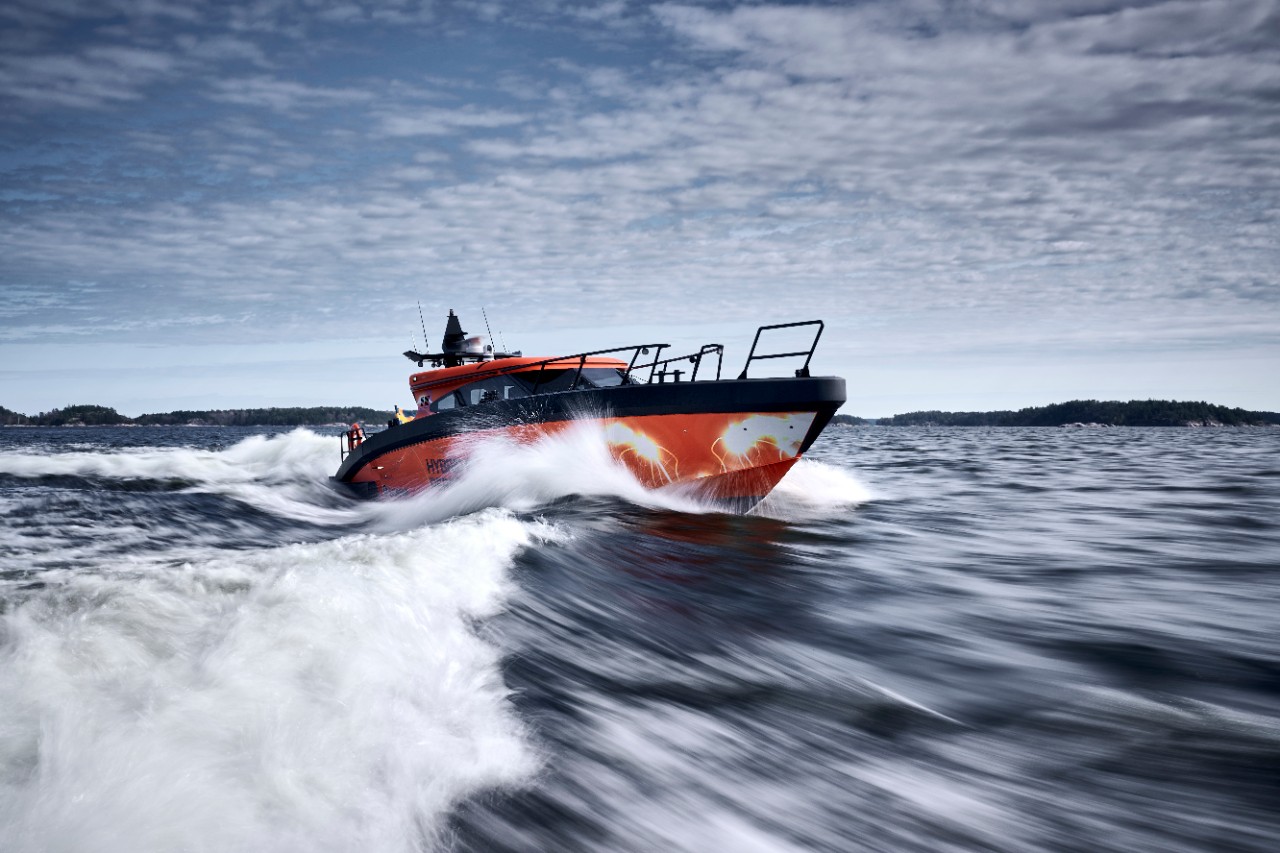
The future of Scania's marine solutions: electrification and fuel-efficiency
2 SEPTEMBER 2024
Electrifying boats is not the same as electrifying trucks and buses. The sea is different in terms of its weather conditions and the possibilities for charging infrastructure. However, the demand for reliable products is something sea and land share. Vessels also benefit from switching between different operating modes, where electricity is integral.
Within Power Solutions, you will find Scania's marine segment offering. The development of the products and services and the in-house expertise are similar to how we innovate in other areas, with the success of our vehicles inspiring us.
In 2023, we launched our new inline engine platform, our most fuel-efficient engine platform ever, with more torque, power, and up to 50 per cent longer base engine lifespan. That is truly something! Some might question why a combustion engine is still valid, and we understand why some might wonder. But even if the shift to a sustainable transport system is happening, it is still some time before all are on board. As long as combustion engines are still in use, their impact on the climate should be improved. With our modular system, we can make the most of what we've got. Our award-winning Scania Super engine, with proven fuel efficiency, is an excellent choice for fleet customers and also the base for our marine engines.
Everybody wants to go electric
There is a significant increase in demand for sustainable products at sea, something we embrace. We have an e-machine that, combined with batteries, an inverter, a master control unit and a combustion engine, serves all kinds of boats well. The hybrid electric power systems allow the engine and e-machine to run together or as standalone power sources. The system enables improved powertrain performance with outstanding torque and response directly from idling, minimising noise when needed. The complete integration of all system components works together and is controlled with a Scania-developed management software system with a standardised customer interface. Because you can switch between different operational modes; fully electric, hybrid and combustion engine, you have great control. The internal clutch makes the system compact, and when it changes from electricity to combustion engine, you don't even notice as it doesn't make a sound or cause a delay.
A different journey
With the increasing demand for electrification in the marine segment, can we do a copy and paste of the journey for trucks and buses? No, we can't because hybrids are a big thing at sea. "Fully electric is definitely on the map, but the peace of mind you have with hybrid mode, for boat people, is what you need,” says Torben Dabrowski, Global Key Account Manager Marine. It's about redundancy. At sea, more so than at land, things don't go as planned. It may be the weather, or you might need to be at aid for someone in distress. If the issue with charging infrastructure is a significant hassle for land transport, it is even more so for water. Unless you have a ferry going back and forth from A to B, the investment it takes is too big.
The patrol boat and the passenger ferry
Let's look at two highly different vessels that have chosen electrification:
The Marell patrol boat M17 is a 17.4-metre aluminium patrol boat with a speed of up to 55 knots. It has a Scania hybrid system with two 230 kW electric machines, four battery packs with a total of 416 kWh, and two Scania V8s with 1150 HP each. This superboat can keep a silent and emission-free mode while going at a slow pace in the harbour or while patrolling but operates at high speed and covers long distances when needed. It is a popular choice for the police and other governmental bodies requesting high-performance boats with low environmental impact and a good working environment for the crew.
On the other side, we have the passenger ferry M/S Rex, built in 1937, with a machine room that seems to be made for storing batteries. She was upgraded with the newer Scania hybrid engine in 2023. The hybrid electric boat, with a capacity of 150 passengers, ferries commuters on behalf of the Stockholm Region. She operates daily on a 75-minute route on Lake Mälaren, between Stockholm city centre and the island of Ekerö. She can also be rented for special events. When choosing electrification, Rex saves fuel, is quieter and has fewer vibrations, which benefits the passengers and the crew. The number of mechanical components has also been reduced. Her ability to run for two hours in electric mode benefits the environment.
What the future holds
But what will happen in the future then? No one knows. “At Scania, we believe customers will choose fully electrified vessels, but it will take time and depend on the development of batteries,” says Dabrowski. Once the capacity to store energy is higher, it will be a more interesting option. That is why hybrid will be the main go-to option for at least another decade. And who knows, hydrogen gas might be an option, too, later on. But batteries will always be needed to store energy. A great mix will probably co-exist for a long time.
Vessels at sea and their needs differ greatly from those of on-road vehicles. Therefore, the transition time to electrification is also slower in this segment. “But we have accepted that challenge to take our customers towards net zero. We need electrification because it contributes to sustainable maritime transport, with lower carbon emissions and noise, protecting the well-being of sensitive ecosystems and coastal areas,” Dabrowski concludes.
Scania is known to be premium and a reliable supplier of engines, and we must keep that reputation even in power solutions. With our knowledge, it's not that complicated.